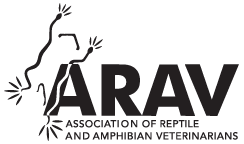Parasitic Stomatitis and Gingival Enlargement by a Novel Serpentirhabdias in a Juvenile Mangrove Monitor (Varanus indicus)
A 4-mo-old, captive mangrove monitor (Varanus indicus) presented for stomatitis with duration of approximately 1 mo. The animal had marked swelling of all gingival surfaces, more significant on the mandibular surface. It was sedated for sampling and computed tomography (CT). CT scan showed no significant findings. Fecal flotation contained a high number of larvae, a low number of larvated eggs, and a low number of strongylid eggs. Direct fecal smear also revealed larvae and trichomonads. Fine-needle aspirate and cytology, obtained using a cytobrush, of the gingiva revealed pyogranulomatous inflammation with parasitic larvae. PCR testing of the gingival sample was negative for herpesviruses and positive for nematodes. Direct sequencing of the nematode PCR product confirmed a novel Serpentirhabdias species, which was 98.9% identical to Serpentirhabdias viperidicus and 98.6% identical to Serpentirhabdias elaphe. The patient was treated with two courses of oral fenbendazole at 20 mg/kg every 48 h for four doses each to achieve significant clinical improvement. Parasitic stomatitis appears to be minimally reported in lizards, and Serpentirhabdias infection is rarely reported in species outside of snakes. This case represents an unusual presentation of nematodiasis, by a novel Serpentirhabdias species in a previously unreported host species.Abstract

Photograph of a mangrove monitor (Varanus indicus) with marked swelling of all gingival surfaces, especially mandibular, resulting in inability to close the mouth.

Photomicrograph of a cytobrush sample from the gingiva. Parasitic larvae and larvated eggs are identified with pyogranulomatous inflammation. Ultimately, the parasite was identified as a novel Serpentirhabdias sp. Aqueous Romanowsky, × 20 objective.
Contributor Notes



